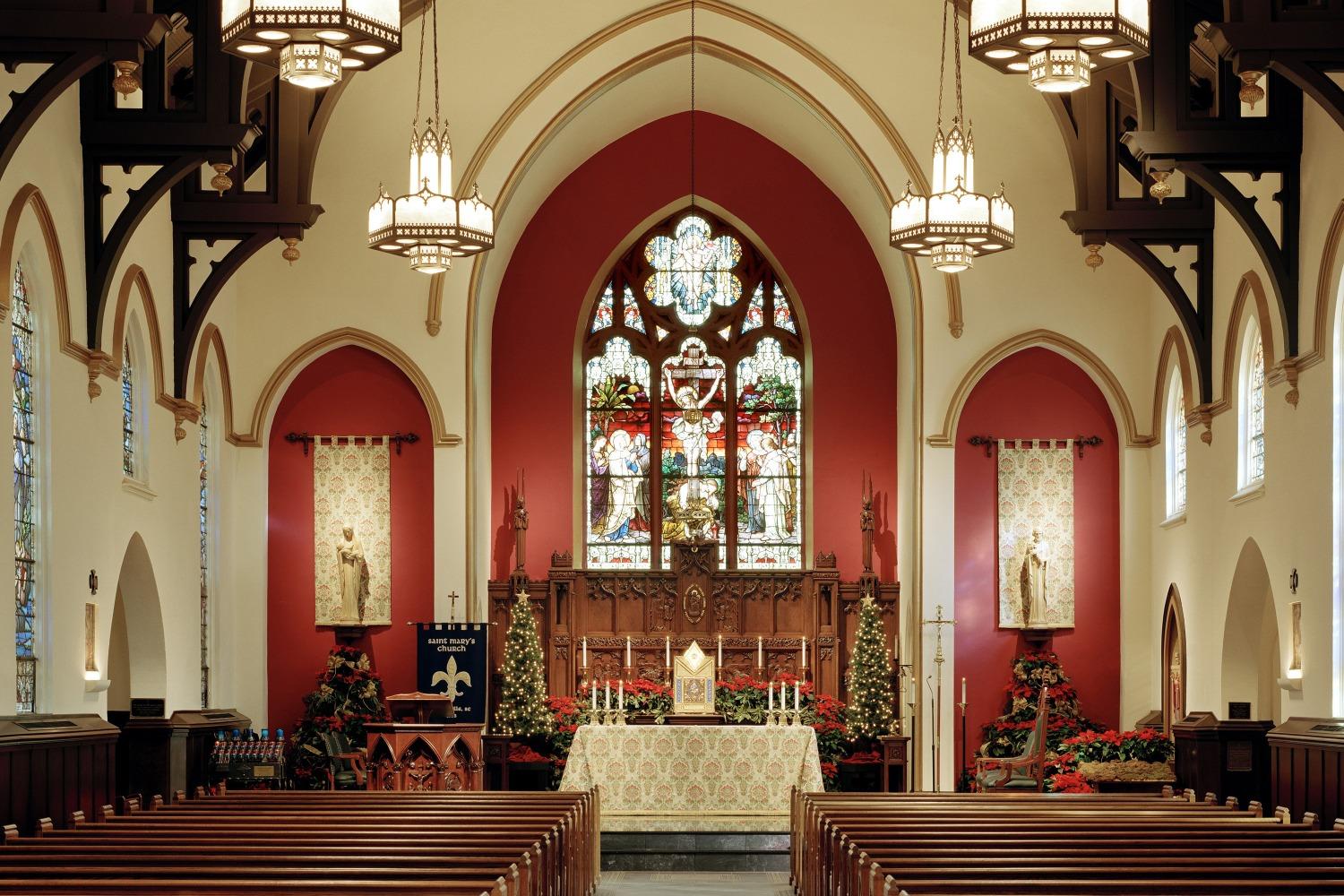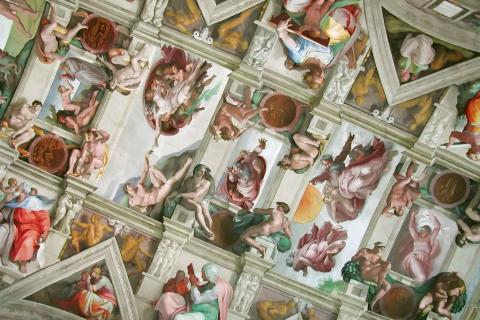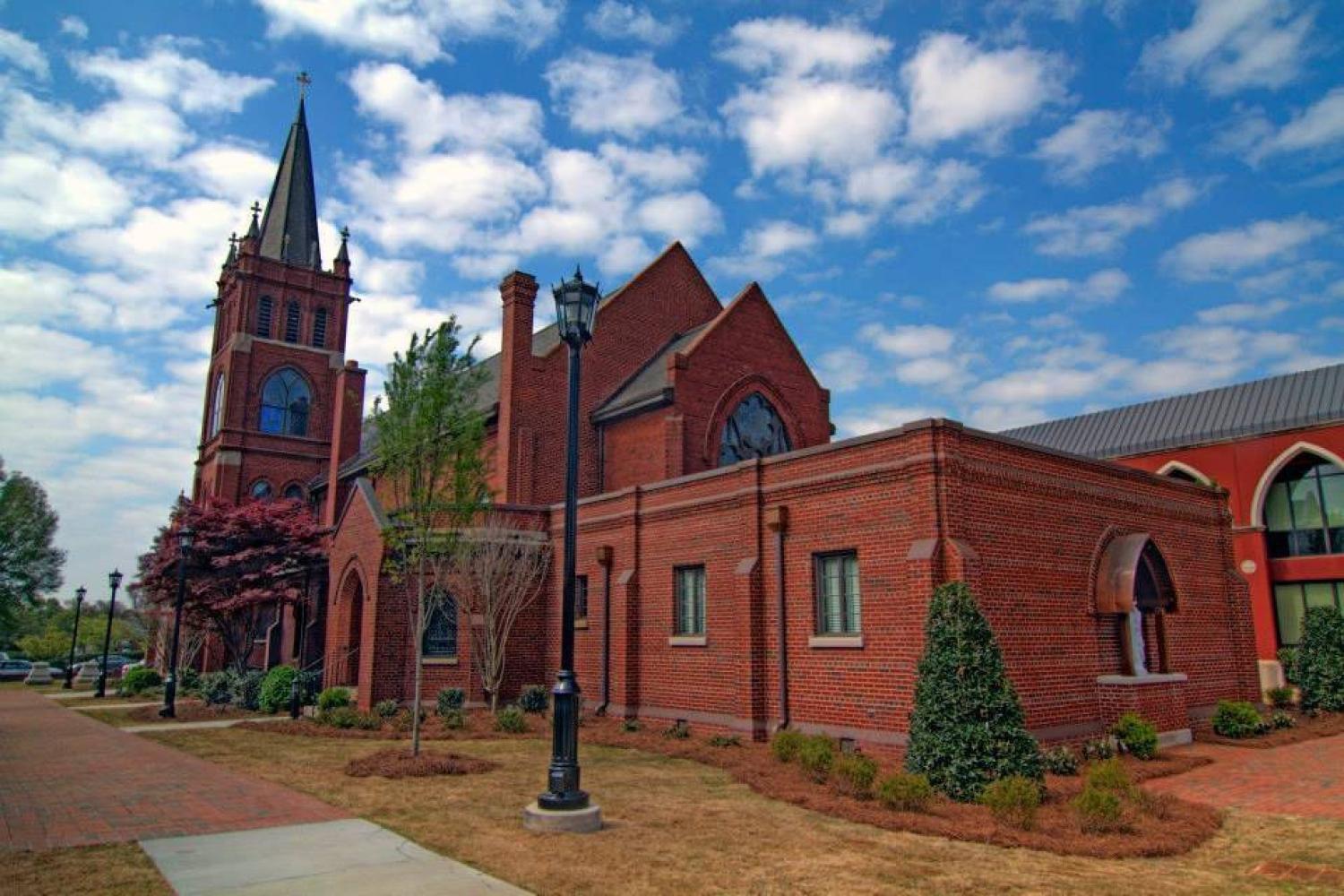
George Weigel's Letters to a Young Catholic explores and comments on Catholic culture, examining history and theology, art and architecture, literature and music. This article is the ninth in a series that walks through Weigel's work letter by letter, providing imagery to enhance the reader's experience. Here we explore "Letter Nine, St. Mary's Church, Greenville, South Carolina: Why and How We Pray." Click here to view the entire series.
In the ninth chapter of Letters to a Young Catholic, George Weigel invites us to the parish church of St. Mary’s in Greenville, South Carolina, to contemplate the question of why and how we ought to pray. St. Mary’s was established in the 1870s as the first parish in Greenville, after years as a lonely outpost relying on itinerant priests from Columbia to the south. The first church was a simple wooden structure, but the growing numbers of Catholics flooding into the area after the Civil War required a larger, more permanent church. The present church, built in the early 1900s, is a magnificent example of Gothic revival architecture in red brick. Master masons, joiners, and glaziers crafted the corbelled brickwork, the carved trusses and the glowing stained glass into a church that invites prayer and worship. As you enter the nave, your eye is immediately drawn down the central aisle to the altar, the lovely tabernacle, and the carved wooden reredos surmounted by a luminous gothic window depicting Christ’s crucifixion. The dark wooden trusses of the roof shelter above, while stained glass windows and stations of the cross alternate rhythmically down the side aisles, leading to statues of Sts. Mary and Joseph on either side of the altar.
By the late 1990s, the church building was badly in need of care and restoration, which was undertaken by the new parish priest, Fr. Jay Scott Newman, in 2002. Fr. Newman is convinced of the ancient maxim, lex orandi lex credendi: the law of our prayer is the law of our belief. In other words, there is a deep relation between how and what we pray and how and what we believe. One reflects and shapes the other. Fr. Newman established at St. Mary’s the Center for Evangelical Catholicism, a bold move in the predominantly evangelical Protestant South. But Fr. Newman believes that carefully-tended prayer and liturgy becomes the well-spring of mission of intentional disciples, and this is reflected in the beautiful eucharistic liturgies and attention to the round of prayer and sacraments at the heart of St. Mary’s parish community. Fr. Newman firmly holds that the secret to the New Evangelization called for by Pope John Paul II are parishes built on the principles of Truth, Goodness, and Beauty, reflected in the material of the church building, the celebration of the sacraments, and the formation of Catholic Christians into intentional disciples.
Weigel uses St. Mary’s and Fr. Newman’s bold mission to reflect on liturgy and prayer. Why do we pray? How ought we to pray? Weigel points out that the Church has continually understood that liturgy is not primarily our work, something that we do in order to bribe the Almighty into showing us favor. It is no merely human work; rather, the eucharistic liturgy is a participation in the eternal worship of the Lamb of God. It is His work. It is a moment in which time and space collapse and a door opens, so to speak, through which the worship of heaven spills over into space and time, sanctifying it an and manifesting at the altar. Lex credendi lex orandi: what we believe should affect how we worship. When St. Mary’s, Greenville, came to truly understand the teachings about the eternal, divine work of the liturgy, it changed the way they prayed the liturgy, attending to it with greater care and devotion.
If the corporate prayer of the liturgy is God’s work in the world, His eternal coming again into time and space, so too is He continually reaching out to the soul in prayer. Weigel observes that “prayer begins with God’s search for us,” that it is He who initiates the desire for conversation with Him in the first place. And a good place to begin is with ancient prayer of the church called the Liturgy of the Hours, a rhythm of set moments during the day that we set aside specifically to worship God and to pick up where we left off in our conversation with Him. Religious communities have built their round of work and prayer on the Liturgy of the Hours since at least the sixth century, and laypeople also use it to structure their days as well. In the Liturgy of the Hours, we are immersed in the ancient prayers of Israel longing for a savior, and in readings from the New Testament. Lex orandi lex credendi: the one who prays from the ever-ancient, ever-new heart of the Church is strengthened in belief and confirmed in the desire to make Christ known. This is something the people of St. Mary’s and their pastor, Fr. Jay Scott Newman, have experienced, and they invite others to experience it, too.

Previous: Body Language, God-Talk, and the Visible Invisible
In the eighth chapter of "Letters to a Young Catholic," Weigel explores the masterfully decorated Sistine Chapel, which shows forth the grand drama of salvation history and threatens to pull back the veil of the spiritual realm.

